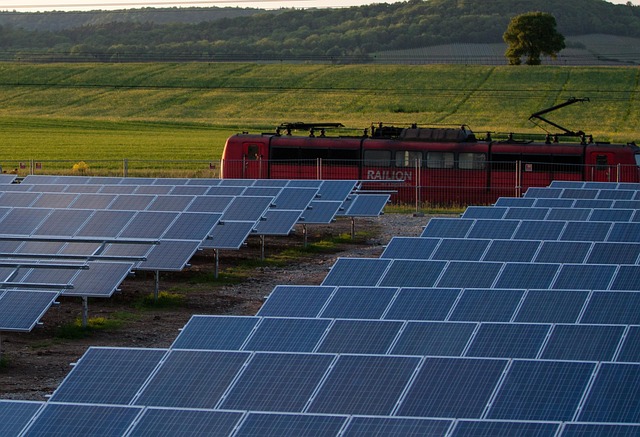Texas is now one of the top states in the US for solar power, with its massive land area, plenty of sunshine and growing investment in renewable energy infrastructure. Once dominated by fossil fuels, Texas is becoming a solar giant, making a lot of electricity from the sun. But just how much solar power is made in the Lone Star State and what does that mean for its energy future? Let’s take a look.
Texas: A Solar Powerhouse in the Making
Historically, Texas has been known for oil and natural gas production, leading the nation in energy output. But over the last 10 to 15 years, solar power has grown exponentially in the state. As of Q1 2025, Texas had the most installed solar capacity of all the states.
According to the Solar Energy Industries Association (SEIA), as of early 2025, Texas has over 22 gigawatts (GW) of installed solar capacity. That’s enough to power more than 3.5 million homes with clean energy. To put that in perspective, in 2010, Texas had less than 100 megawatts (MW) of solar capacity. In other words, the state has multiplied its solar output by more than 200 times in 15 years.
Annual Solar Generation in Texas
The US Energy Information Administration (EIA) reported that in 2023, Texas generated about 31,000 gigawatt-hours (GWh) of electricity from solar. That’s up from 23,000 GWh in 2022. In fact, solar generation in Texas has been growing at a rate of nearly 35% year-over-year for the last 5 years. Here’s the numbers:
- In 2015, Texas made about 500 GWh from solar.
- By 2020, that number was over 10,000 GWh.
- By 2023, it was over 30,000 GWh and projected to be even higher in 2025 and beyond.
Texas is now one of the top states for solar generation in absolute terms, although per capita generation still trails states like Nevada and Arizona.
Why Texas Is Ideal for Solar Energy
Texas’s booming solar output isn’t a coincidence—it’s a result of ideal conditions and favorable policies. Several factors contribute to the state’s dominance in solar power generation:
- Solar Potential: Texas is blessed with high solar irradiance, especially in regions like West Texas, where the sunlight is consistent and intense. According to the National Renewable Energy Laboratory (NREL), much of Texas receives an average of 5.5 to 6.5 peak sun hours per day, making it one of the best states in the country for solar efficiency.
- Land Availability: With its expansive rural landscapes and vast open spaces, Texas has the room to host utility-scale solar farms. This contrasts with more densely populated states where space is limited.
- Deregulated Energy Market: Texas operates under a deregulated electricity market (especially within ERCOT or the Electric Reliability Council of Texas), which allows for more competition and innovation in energy supply. This has made it easier for independent power producers to develop solar projects and sell electricity directly to the market.
Falling Costs: The cost of solar technology, especially photovoltaic (PV) panels, has dropped dramatically. Between 2010 and 2020, the price of solar panels fell by nearly 80%, making large-scale projects economically viable.
Types of Solar Installations in Texas
Solar power generation in Texas comes from three main types of systems:
Utility-Scale Solar
These are large solar farms that supply electricity directly to the grid. Texas has dozens of utility-scale solar projects, including some of the largest in the nation. As of 2025, over 90% of Texas’s total solar generation comes from utility-scale operations. Many of these are concentrated in West Texas, where land is cheaper and sunlight is abundant.
Commercial and Industrial Installations
Corporations in Texas, particularly in sectors like tech, retail, and logistics, are investing in on-site solar to reduce operating costs and meet sustainability goals. Commercial solar installations account for a growing share of overall capacity, though still much smaller than utility-scale.
Residential Solar
Although residential solar represents a smaller portion of total generation, it is expanding rapidly. As of early 2025, more than 250,000 Texas homes have installed rooftop solar systems, contributing to localized power generation and reducing strain on the grid. Residential solar adoption continues to rise across Texas, supported by a growing network of installation providers. Companies like Metro Express Solar Dallas contribute to this trend by helping homeowners transition to rooftop solar, improving localized energy resilience and reducing grid demand.
How Solar Is Impacting Texas’s Local Grid and Energy Independence
Texas’s energy independence is unique—most of the state operates under ERCOT, a grid largely disconnected from the national systems. As solar capacity grows, it’s becoming a critical asset for grid stability, especially during peak demand and extreme weather events. After the 2021 winter storm exposed vulnerabilities in gas and coal infrastructure, solar (combined with battery storage) has become a strategic component in efforts to decentralize and diversify the grid. Several pilot programs across Central and West Texas now include microgrids and solar-plus-storage systems that allow for localized energy security and faster recovery during outages.
Regional Solar Leaders in Texas
While solar is growing statewide, some regions of Texas are leading the way:
- West Texas: Home to many of the state’s largest utility-scale solar farms. Flat land, minimal cloud cover and affordable land make it perfect for solar.
- Dallas–Fort Worth Metroplex: One of the top areas for residential and small commercial solar installations.
- Austin: As a tech and sustainability hub, Austin has high solar adoption, with municipal incentives and community solar programs.
- San Antonio: CPS Energy, the municipal utility, has invested heavily in solar, including distributed generation and large-scale projects.
Local Jobs and Economic Impact of Solar in Texas
Beyond clean energy, Texas’s solar boom has created tens of thousands of jobs. According to the Solar Foundation’s Solar Jobs Census, Texas had over 11,000 solar workers in 2024 and is expected to grow 40% in the next 5 years. These jobs span from panel manufacturing in Houston, system design in Austin, sales and marketing in Dallas–Fort Worth to installation teams across the state. Local governments in El Paso and San Angelo are now offering solar technician training programs to support workforce development and meet industry demand.
Future of Solar in Texas
Texas’s solar capacity will continue to grow rapidly. According to SEIA, over 40 GW of solar is in the pipeline for Texas over the next 5 years. By 2030, Texas will surpass 65 GW of installed capacity. Here are the trends that will drive this growth:
- Increased investment in utility-scale projects by energy companies and institutional investors.
- More battery storage to allow solar to be used after the sun goes down.
- Expanded community solar programs so renters and low-income residents can benefit from solar without installing rooftop panels.
Texas is the Solar Power Leader
Texas has become a national solar power leader, producing over 30,000 GWh annually and has a diverse mix of utility, commercial and residential installations. The state’s solar boom has been driven by sunshine, economics and a deregulated energy market. With tens of gigawatts of new capacity coming online, Texas will shape the future of solar in America.So now the wait.




